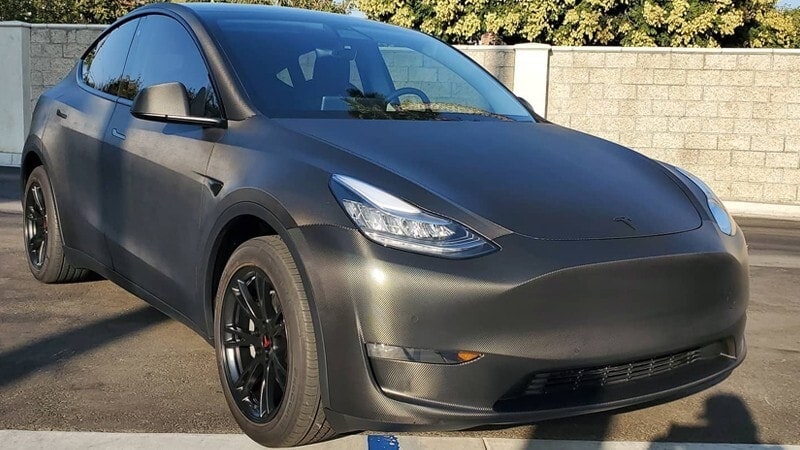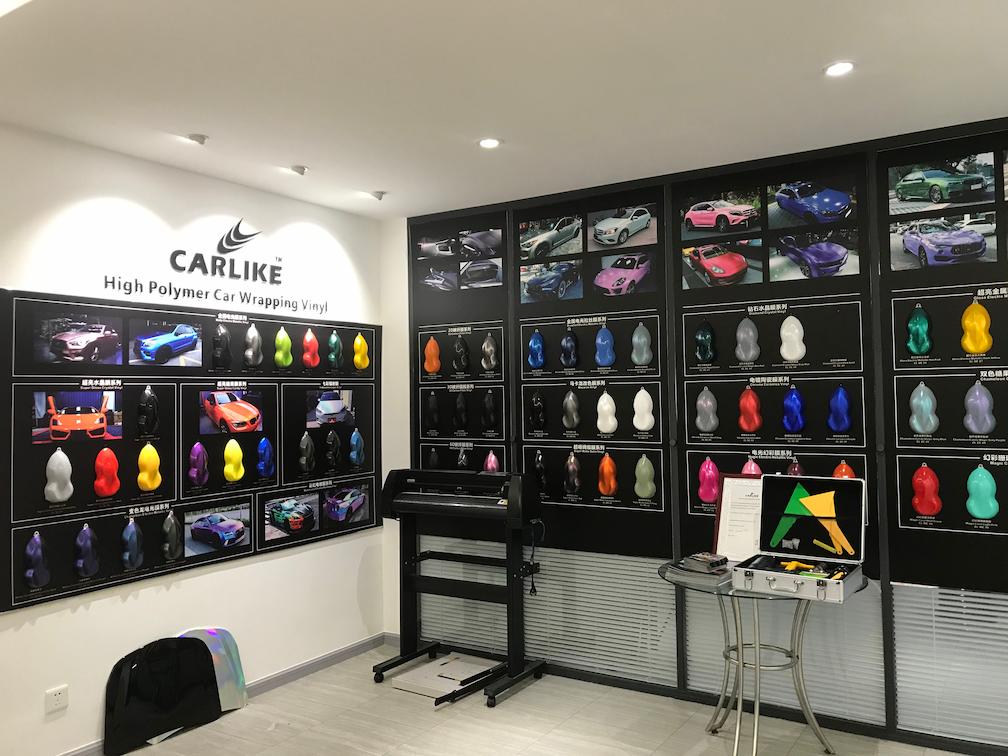Lately, the carbon fiber wrap has been garnering a lot of attention in the automotive world. It is a flexible and customizable option for those wanting to add a sleek and stylish touch to their vehicles. Let’s discuss how this affordable option can simultaneously offer protection and style to your vehicles.
What Is Carbon Fiber Wrap?
Simply explained, a carbon fiber wrap is a thin film made of vinyl or polyurethane applied to the vehicle. This film looks similar to real carbon fiber coating and adds a stylish touch to vehicles. Generally, carbon fiber wraps come in various finishes and styles, including matte, glossy, satin, and forged.
Carbon fiber wraps stick to vehicles’ exteriors to add to their aesthetics. These wraps form a protective coating that offers good paint protection to the vehicle.
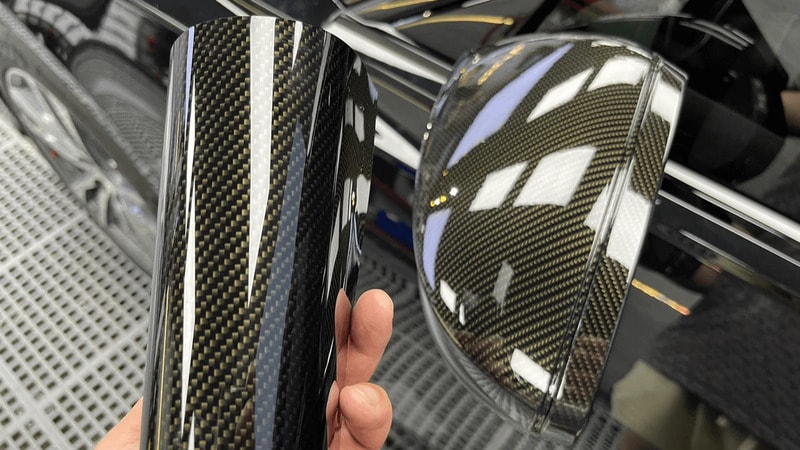
Vehicle enthusiasts commonly use carbon fiber wrappings on the car’s hoods, mirrors, doors, interior trims, roofs, and spoilers. It is now becoming common to spot vehicles covered with carbon fiber wraps. All of this is because these wraps perfectly combine practicality with aesthetics and style.
Global Market Trend of Carbon Fiber Wraps
The global automotive wrap film market is booming, expected to reach USD 25+ billion by 2030, with carbon fiber wraps being one of the fastest-growing segments.
The rising demand comes from car enthusiasts, commercial fleets, and even luxury dealerships looking to offer customizable, reversible upgrades.
In the Asia-Pacific, especially China, carbon fiber wraps are becoming a trend not just for cars, but also for motorcycles and bikes.
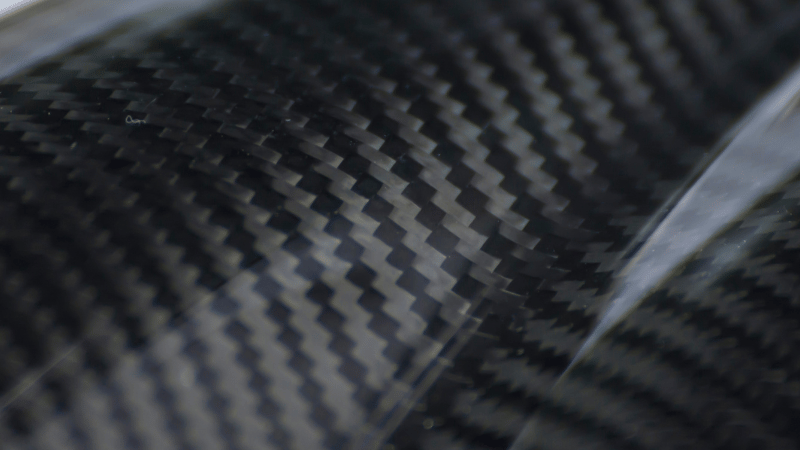
Benefits of Carbon Fiber Style Wraps
Carbon fibre wraps can add to the style and overall look of any vehicle without costing a fortune. If you want to enhance your car’s exterior economically, carbon fiber wraps are your answer.
These wraps are very easy and quick to install, often without needing any specialised DIY tools. Carbon fiber wraps are quite versatile and offer flexibility in application. You can use them on any region of your vehicle, and they are sure to stand out.
Another benefit of vehicle wraps is hidden in their protective nature. These wraps can protect your vehicle’s original paint from scratches, sunlight, and the effects of environmental conditions.
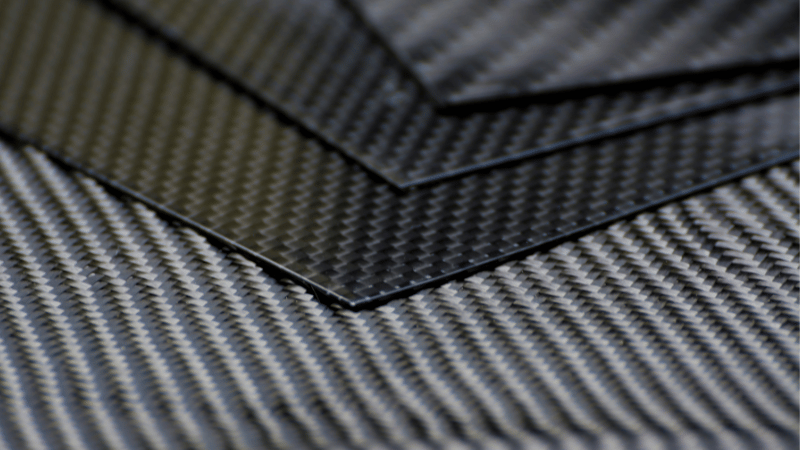
Advanced Carbon Fiber Wrap Technologies
Modern carbon fiber wraps are not just about looks. Premium films now feature:
- Air-release channels for bubble-free installation.
- UV-stable layers that prevent fading or yellowing.
- Scratch-resistant and self-healing top coats (in PPF-based wraps).
- Forged carbon fiber patterns, inspired by Lamborghini’s forged carbon design, offering a unique, luxury appearance.
Types of Carbon Fiber Wrap Materials
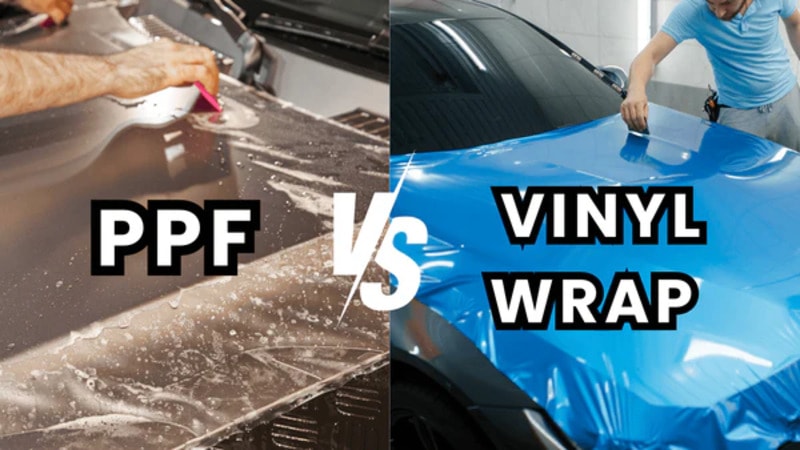
Generally, there are two common types of carbon fiber wrap materials available for your automotive needs. These include carbon fiber vinyl wrap and carbon fiber PPF.
Carbon fiber vehicle vinyl wraps are made of a flexible and thin PVC film. This thin film is lightweight and offers easy application for cars and motorcycles. You can use these thin films to add visual appeal to your vehicle, especially when strength, environment, and heat protection aren’t your major concern.
Vinyl wraps offer a decorative function and are made to ensure quick and hassle-free installation and removal. These wraps are a great option to stick to if you’re low on money, but still want aesthetic appeal for your vehicle.
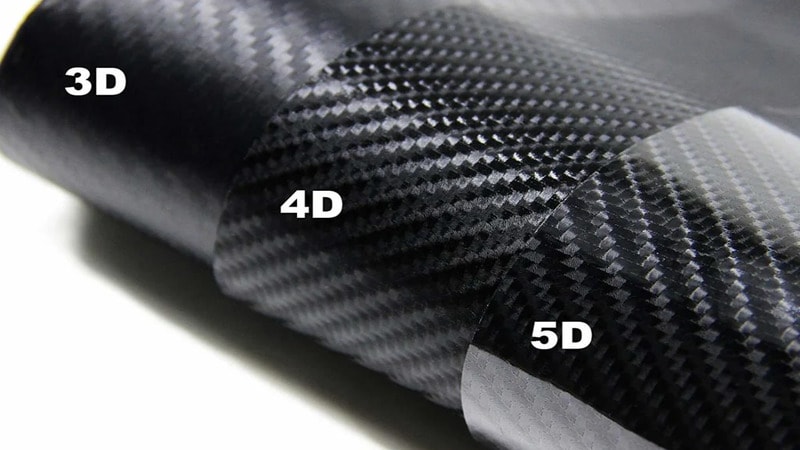
The second type is the carbon fiber PPF (paint protection film) that will suit you if you need a thick and strong material to cover your vehicle that resists easy peeling. What you need to know about PPF is that it’s a TPU-based, self-healing film that offers protection against scratches and intense temperatures.
If you want to cover your vehicle without compromising on style and durability, we suggest preferring PPF over vinyl wraps. PPF often costs more than other options, but it’s worth the investment.
You can create unique designs on your vehicle using PPF, especially if you own a fleet. Use your understanding of colour psychology and brand voice to coat your vehicles and make strong marketing statements.
Comparison with Other Materials
Carbon fiber is a modern and better alternative to the traditional materials used in vinyl wraps and PPFs. It has become the top choice of vehicle enthusiasts who prefer protection for their vehicles without compromising on style and don’t want to remove cheap wraps every day.
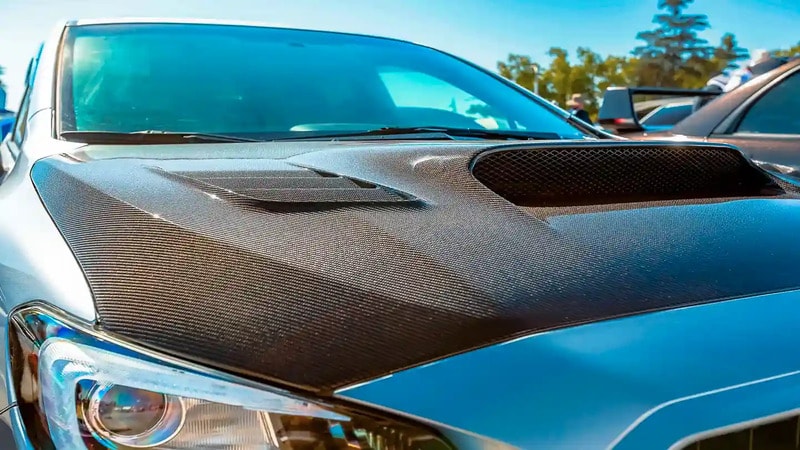
Compared to traditional materials, carbon fiber offers more durability and resistance to scratches or wear. Thanks to its ease of application and removal, DIY enthusiasts can easily work with it. You just need a little guidance on car wrapping, and you can easily make the right choice.
Real vs. Faux Carbon Fiber: Key Differences
The carbon fiber that we generally get is faux fiber, made to mimic the real carbon fiber. While it has its benefits, it’s important to understand how the faux carbon fiber differs from the real carbon fiber.
Below is a table of the differences between real and faux carbon fiber:
| Features | Carbon Fiber Wrap | Real Carbon Fiber |
|---|---|---|
| Material | Vinyl film | Polymer weave + epoxy resin |
| Cost | Affordable ($5–$20/ft²) | Very expensive ($100+/ft²) |
| Durability | UV resistant, removable, can peel | Permanent, durable under stress |
| Visuals | High realism, especially 5D | Authentic, woven depth |
| Weight | Lightweight, non-structural | Lightweight and structural |
| Application | Easy DIY or professional install | Requires molding, curing, and skilled labor |
| Repairability | Easy to replace or re-wrap | Hard to repair requires replacement |
Matte vs. Gloss Carbon Fiber Wrap
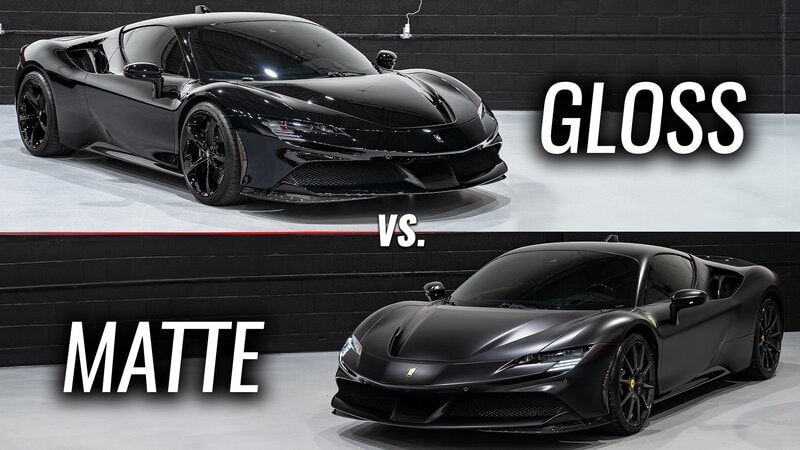
Choosing between matte vs. glossy wraps can be tricky unless you’re clear on what you need.
Matte carbon fiber is for those who want a subtle, stealthy, and professional look for their vehicle. It is mostly used on interior trims, vehicle stands, and vehicle mirrors. You’d probably want to know how long this car wrap lasts. By the way, it’s very durable and will last a long time.
Glossy carbon fiber, on the contrary, offers a polished, shiny, and reflective look, similar to the original wet carbon. This is mostly used on hoods, accents, fenders, and spoilers to give a smooth and shiny look to the car.
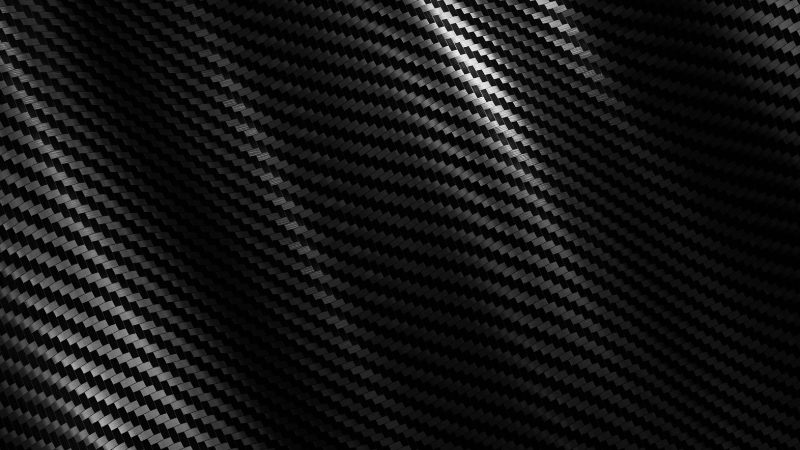
Carbon Fiber Wrap Durability: What to Expect
There isn’t a single way to decide how long your carbon fiber wraps will last. It depends on a range of factors, and hence the numbers vary.
Generally, carbon fiber vinyl wraps can last anywhere between 3-6 years. However, it really depends on the vinyl wrap manufacturing brand, its exposure to extreme weather conditions, and how well it has been kept.
PPF wraps are rather long-lasting if manufactured by a good brand. These can last up to 10 years if taken proper care of. If you get a PPF that offers self-healing, impact-resistance, and UV-protection, it can last even longer.
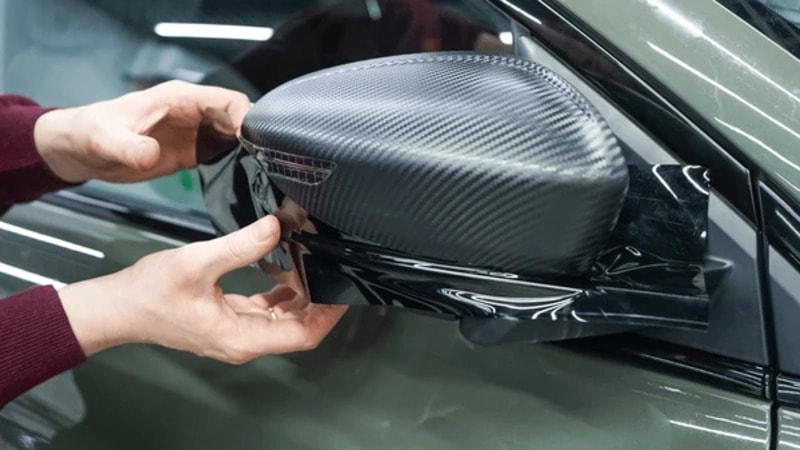
Common factors affecting the lifespan of a PPF or carbon fiber coating include the intensity of the climate and the vehicle’s exposure to rain, UV rays, and sunlight. You must know how to clean and wash PPF coatings properly to make them last long, too.
Lastly, ensuring proper vinyl wrap installation and sealing can also add to the wrap’s life. Make sure you choose the right material to protect your vehicles so these coatings can last long.
Where and How to Use Carbon Fiber Wrap on Your Car?
CF wraps can be applied to a vehicle at various points. You can also mix and match the glossy wraps with matte carbon fiber or metallic wraps to give a customized look to your car.
On the vehicle’s exterior, the carbon fiber wraps can be used to cover the side mirrors, roof, hood, bumpers, and spoilers of the vehicle.
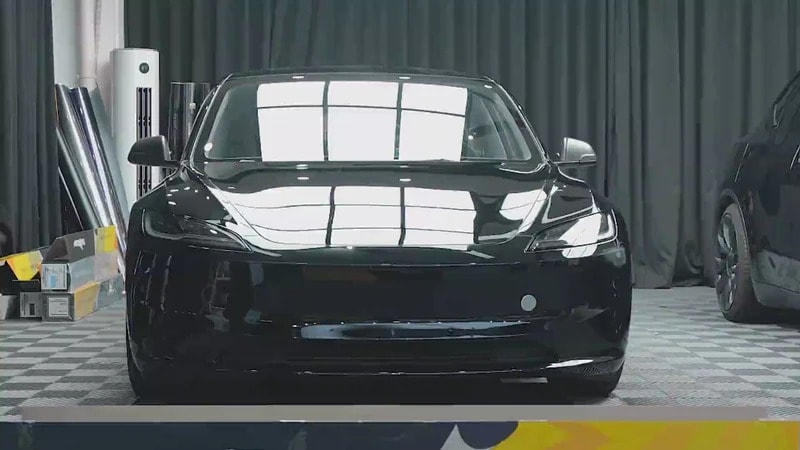
Inside the vehicle, you can cover the dash trims, consoles, and door panels to give a custom and stylish look to the unit.
If needed, you can opt for partial wrapping on vehicle accents and racing stripes, too. Some people often combine the carbon fiber vinyl wraps with carbon fiber PPF for added protection and style.
Design and Aesthetics
When it comes to using carbon fiber wraps for aesthetics and style, the options are endless. We now have a range of designs, colors, patterns, and weaves easily available. Everyone can give a unique look to their vehicle, combining the available options in whatever way they like.
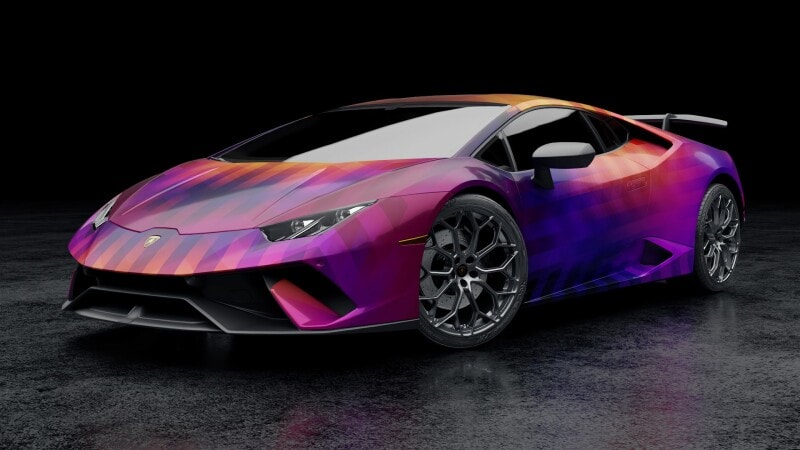
We advise using a mix of textures and colors to give your vehicle the protection and style that it deserves. You can choose from a variety of available vinyl wrap colors, including black, silver, blue, green, or red– each with its own persona and benefits.
Carbon Fiber Wraps Installation: Tools and Materials Needed
Unlike other options available to cover and protect the vehicles, mastering vinyl wraps is very easy. You just need to know the right technique, a few basic tools, and you can easily DIY your car wrapping.
For starters, you’d need a heat gun, a tool for cutting edges, and a squeegee. Some applications might require the use of a primer and a sealant to ensure smooth bonding between the vehicle’s surface and the wrap.
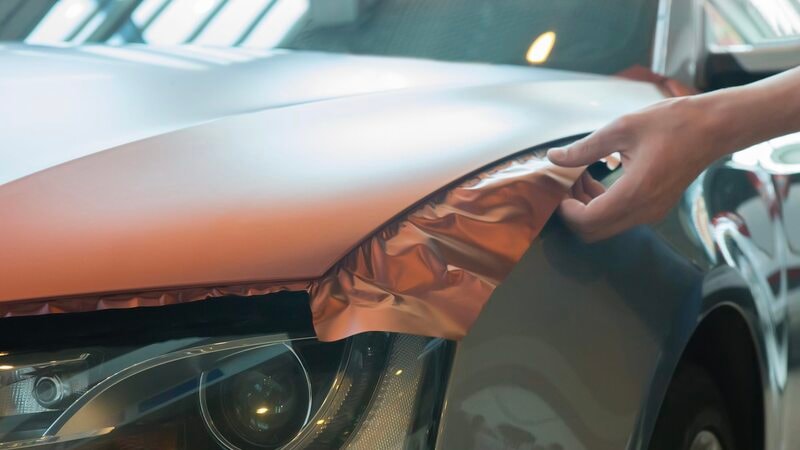
Make sure you choose the right wrap size so it can perfectly fit the vehicle, without requiring tiring cutting.
Tips For Smooth Carbon Fiber Installation
To prepare for a smooth and seamless carbon fiber installation, we have a few tips that can work for everyone, regardless of the car they own and the wrap they are using.
Always make sure toproperly clean the vehicle’s surface before wrap application. When you apply the wrap, start from the centre and then move outwards.
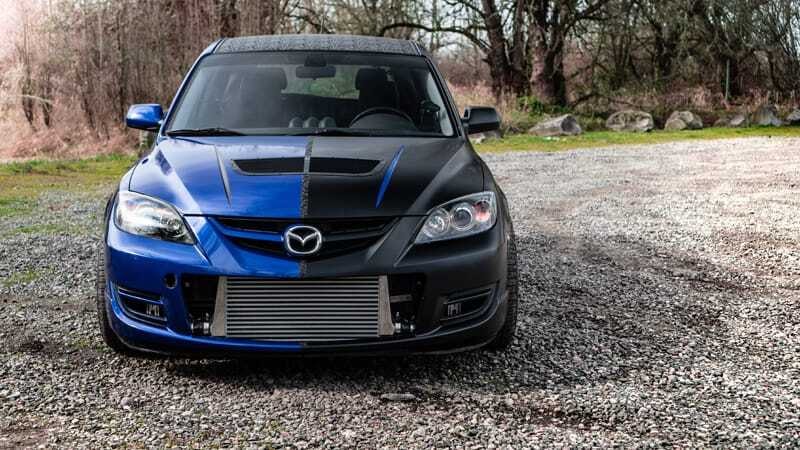
Make sure to use a squeegee whenever you see bubbles in the wrap and use a heat gun when there are curves and edges. Always seal edges properly and wash wrapped cars with care if you want the wrap to last long.
FAQs
Q1: How long does carbon fiber wrap last?
The lifespan of carbon fiber wraps varies based on a range of factors. With proper care, these wraps can easily last 5-8 years.
Q2: Why choose it over a paint job?
It offers the stunning look of carbon fiber at a fraction of the cost and time. Crucially, it’s completely reversible and protects your original paint, making it a risk-free upgrade that safeguards your vehicle’s long-term value.
Q3: Is it only for sports cars?
Not at all! It’s a versatile material for any vehicle. Commonly used for stylish accents on mirrors, roofs, or interiors, it’s an affordable way to add a high-tech, sporty flair and personalize any car, SUV, or truck.
Conclusion
Now that you know everything about carbon fiber wraps and PPFs, there’s nothing left but to install these on your vehicle. Only invest in reliable manufacturers of car wraps and coating film. Get your car wrapped and coated with high-quality carbon fiber to experience protection like never before.
Upgrade with Durable Carbon Fiber Wraps from Carlike!
Get the perfect finish with CarLike Film’s premium carbon fiber wraps. With low MOQs and
rapid shipping from our ready inventory, we make it easy to transform any vehicle or fleet with professional-grade, durable films tailored to your needs.
Contact us now to get the superior carbon fiber wraps!
